Fittings for the toilet flush tank: how the spillway device works and works
Even the most reliable plumbing fixture can break. Especially unpleasant if this product is used daily by all family members. If the fittings of the toilet flush cistern have failed, then you don’t want to wait a couple of days until the plumber comes, do you agree? Moreover, such a problem can be successfully solved on their own.
Before proceeding with the repair, it is necessary to understand the design of the tank, the device of the drain mechanism and understand the principle of operation of the spillway. The article discusses in detail all of these points, as well as describes possible breakdowns of the toilet fittings and how to eliminate them.
The content of the article:
Toilet bowl: what's inside?
The toilet is central to any bathroom. If you can do without a shower cubicle or bathtub using a washing tray, then the toilet bowl is an indispensable device not only for every family member, but even for some pets.
Therefore, it is simply necessary to know its features and device, so that on Saturday morning you will not be alone with such a breakdown.
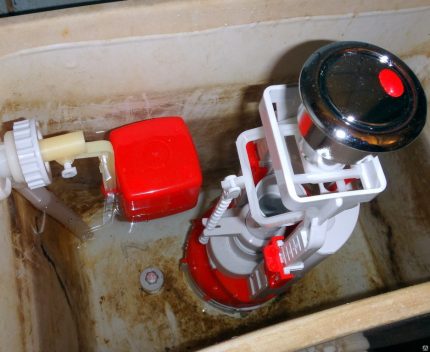
Features of drain tanks
Tanks for toilets differ in the material of manufacture, the method of installation and connection to the water supply, the type of arrangement of the button / lever. And the price range of this type of plumbing fixtures is very wide - from inexpensive domestic models to exclusive design options by eminent manufacturers of sanitary ware.
According to the manufacturing material, the following types of toilet cisterns are distinguished:
- earthenware;
- plastic;
- cast iron.
Spillway fittings used for toilets are mainly made of plastic. This applies even to expensive models.

Earthenware Tanks gained recognition and the greatest distribution worldwide. It is this material that can most often be found in bathrooms, where a pair of toilet bowl + tank is installed.
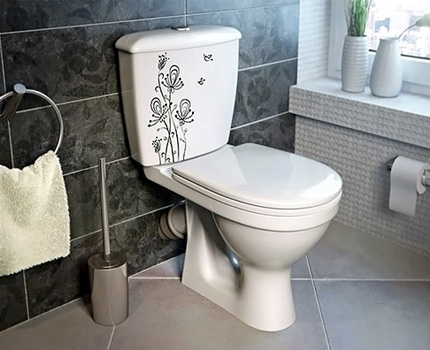
Plastic models drain tanks are flattened. This is due to the specifics of their application - the so-called wall hung toiletswhen the flushing device is installed in the wall. The design is reliable, easy to maintain and has a long service life.
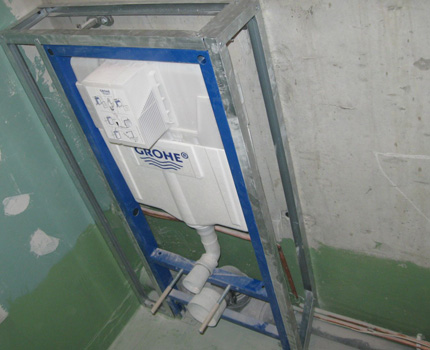
Cast Iron Tanks - This is a relic of the past. Heavy, bulky and unpresentable constructions still remain in use by many zealous residents of our country. But during the repair, often the old cast-iron products are replaced with beautiful modern plumbing.
According to the method of connecting to the water supply, there are toilet tanks with top and bottom connections. The second is more preferable - they look more presentable and create less noise during work.
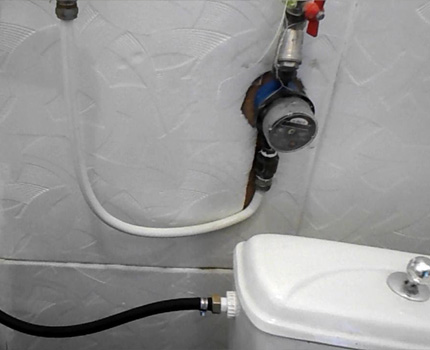
There are three ways to install a drain tank:
- top mount;
- installation in a false wall;
- on the toilet shelf.
Top mount - This is a retro option. This arrangement of the drain device is used in the bathrooms, made in retro style.
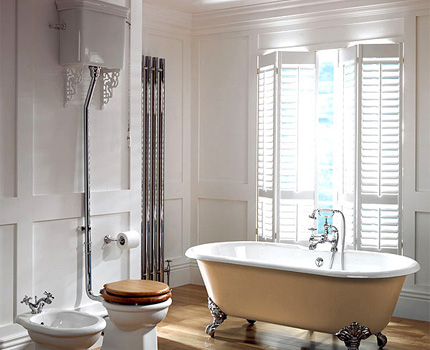
Toilet installation used for hanging models when the tank is hiding in the wall. This allows you to save space in the bathroom and harmoniously fit plumbing into the overall style of the bathroom / toilet.
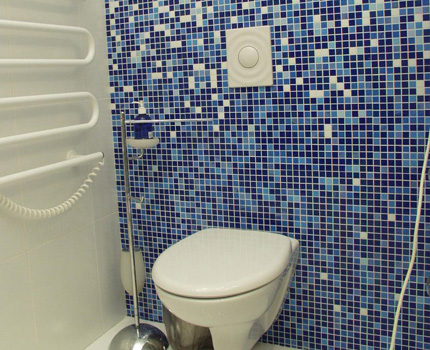
Toilet shelf mounting - a traditional solution. These are the usual models of a plumbing pair, when the drain system is mounted on the shelf of the toilet bowl.
Advantages: simplicity and affordability. And the choice is very wide - you can choose both a domestic version and elite sanitary ware of Italian, French or German manufacturers.
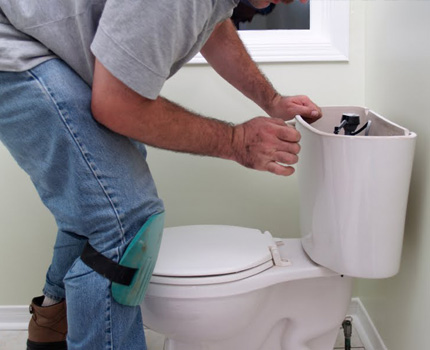
The internal structure of the tank
Inside each drain tank there is a stop valve to control the operation of the toilet. For many models, fittings come complete with all the necessary fasteners and nuts.
By the method of water supply and the installation location in the tank, these types of fittings are distinguished:
- top eyeliner;
- lower eyeliner;
- universal.
Top eyeliner design integrates into the collection tank. A flexible water supply pipe is attached from above. This must be taken into account, because such fittings are not suitable for every model of the drain tank. Basically, only domestic manufacturers provide overhead in their plumbing products.
Armature with bottom eyeliner Comes with most Western-made drain tanks. Moreover, the design is plastic, but the quality of all components is high.

Universal fittings The toilet flush tank is convenient in that it can be placed in a container with a lower or upper water supply.As needed, a special plug is put on the second hole, which comes with the kit.
By the type of material from which the reinforcement is made, there are:
- plastic constructions;
- metal alloy bronze or brass.
Most models are equipped with plastic fittings. Moreover, in the case of wear of individual parts, you can always purchase the necessary plumbing in the store. If it is not necessary, then you can buy a new design.
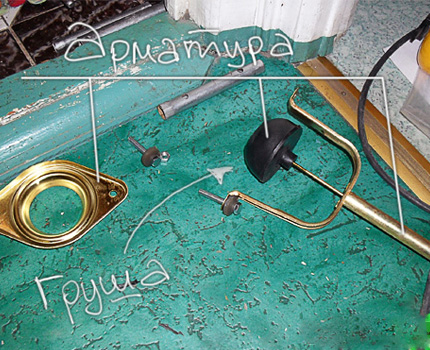
The drain tank fitting consists of 3 main components:
- filling in;
- drain;
- overfill protection.
Filling out - a node that provides filling the tank with water flowing through a flexible pipe. The valve design has a special valve that blocks the access of water at the right time. Its work is provided by a float, which is made of foam or other lightweight material.
Drain. The main part of this unit is drain hole valve. It is driven by thrust at the moment the user presses the button / lever.
Overflow protection or overflow. The main element of this safety device for the drain tank fittings is a plastic tube that is empty inside. It is installed vertically in the tank.
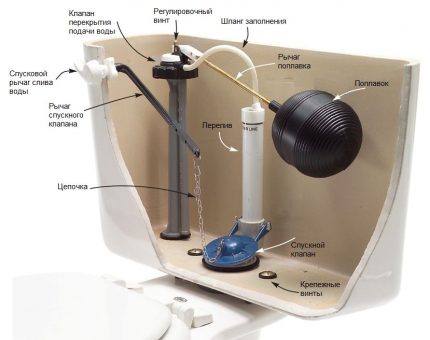
The principle of operation of the spillway device
The spillway device of the toilet tank is launched into operation by the user’s influence on the external valve mechanism. Moreover, depending on the principle of the mechanism, the design itself will differ.
Features of the drain function of the tank
Among the work items used to activate the flush function are:
- button;
- lever arm;
- pedal.
The most common option is a button. Moreover, there are models of fittings with one or 2 different buttons - for the release of small and large volumes of working fluid. 2 versions of flushing can save not only the planet’s water resource, but also reduce the monthly payment for water supply.

When a button or lever is acted upon, a thrust is formed which opens the drain valve. Water from a 10-12 liter tank rushes down into the toilet bowl, cleaning it and washing away everything that was in it before.

How does filling happen?
Simultaneously with the emptying of the tank, a float is lowered, which leads to the opening of a valve that shuts off the water supply from the water supply system. Water gradually fills the tank and as soon as the float is at a certain level set by the user earlier, the float rod will completely shut off the water supply to the toilet drain tank.
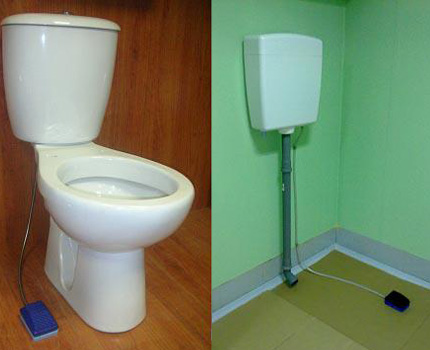
How does overflow protection work?
When a failure occurred during the supply of the working fluid or some of the valve mechanisms failed, a safety device is activated - overflow. This is an empty pipe connecting to the drain valve.
The principle of its operation is simple - as soon as the water level in the tank becomes higher than the permissible, water will begin to overflow into this pipe and flow into the toilet bowl.

Problems with toilet seat fittings
A high-quality toilet bowl + flush tank kit from a manufacturer with a good reputation can last about 20 years. But spillway fittings, even the most reliable, will fail earlier.Therefore, it is important to identify and repair breakdowns.
Most often, you may encounter such problems:
- filling does not occur;
- water constantly flows into the toilet bowl;
- lack of reaction when pressing the button / lever;
- leaks at joints;
- weak discharge head.
Problem number 1. Filling does not occur if the inlet membrane is severely clogged. Then you can not do without cleaning it or replacing it. If the condition of the membrane is working, and the tank does not fill with working fluid, then you need to check the correct functioning of the float. May have to float adjustment or replacement.

Problem number 2. Water constantly flows into the toilet, increasing the reading of the cold water meter. This problem occurs when large debris or other objects enter the tank. All that is unnecessary interferes with the normal operation of the tank fill valves. Necessary disassemble the tank and remove foreign objects from it.
Also constant leak in the toilet may cause skewing, loosening of the fastener, or damage to the float. You can repair the float valve yourself without any difficulty:
In the case when everything is in order with the float, you need to check the condition of other plastic parts of the valve - the rod, diaphragm lever or the spokes of the float.
Problem number 3. When you press the flush button, nothing happens. Here it is necessary to check the presence of gaps in those places where they should not be - at the joints. Also, plastic fittings may be broken, which is especially common in cheap models that have served for more than 3 years.
A frequent reason for the violation of the water supply to the tank is the inappropriate length of the drain and filler pipes or their damage. In the fight against the situation, we carry out the following steps:
Problem number 4. Another trouble arising with the toilet bowl is leaks at the threaded joints. To eliminate this trouble, you will need to replace the gasket. If this part has not yet had time to wear out, then you need to check whether the nuts are tightened tightly and if there are any skews.
Problem number 5. The situation when the drain occurs, but its pressure is weak, is also quite common. This indicates a violation of the flush due to a rubber hose falling into the outlet or some other foreign objects.
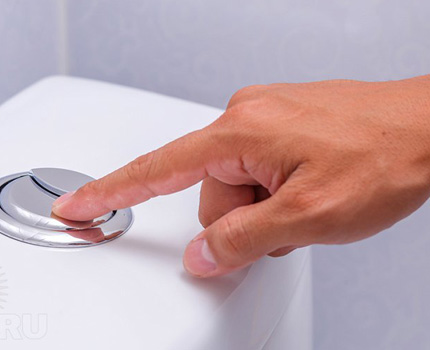
If a leak is detected in the area of the flush valve, we perform the following actions:
If a serious repair is required with the replacement of many parts, it will be easier and cheaper to install a new drain mechanism with subsequent armature adjustment.
You should also take responsibility for its purchase - buy a new one in a company store or pick up a suitable model from another manufacturer. It is important to consider the diameter and location of the eyeliner on your toilet.
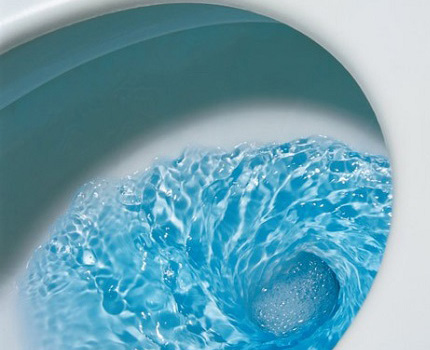
Conclusions and useful video on the topic
How to get and rinse or replace the fittings of the tank built into the wall is shown in the video clip:
The principle of operation of the drainage fittings of the toilet bowl tank is described in detail in the video:
About the device and assembly of fittings installed in the toilet bowl is described in the video clip:
Description and characteristics of the toilet flush mechanism can be seen in the video:
A clear and useful video clip about repairing the toilet drain unit:
Having studied the external device of the drain tank, you can not be afraid of unpleasant surprises. If the tank suddenly stops collecting or water flows continuously, you can try to deal with the problem on your own by inspecting the fittings and disassembling the corresponding working unit.
If the plumber will deal with the breakdown, then it will be much easier to accept the results of his work.
Share with your readers your experience in repairing drain tank fittings.Please leave comments on the article, participate in discussions and ask questions of your interest. The feedback form is located below.

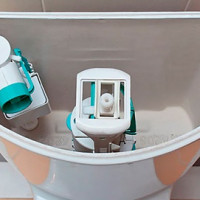 Setting up the toilet fittings: how to properly adjust the spillway
Setting up the toilet fittings: how to properly adjust the spillway  Do-it-yourself toilet drain tank repair: instructions for fixing typical breakdowns
Do-it-yourself toilet drain tank repair: instructions for fixing typical breakdowns 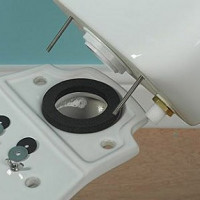 Replacing the toilet bowl: how to remove the old tank and put in a new one
Replacing the toilet bowl: how to remove the old tank and put in a new one 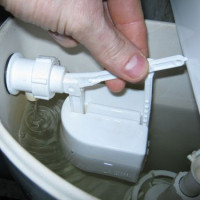 Toilet float: device, adjustment rules and replacement example
Toilet float: device, adjustment rules and replacement example  Flush mechanism for the toilet: device, principle of operation, an overview of various designs
Flush mechanism for the toilet: device, principle of operation, an overview of various designs  Valve for toilet: types of valves and features of their installation
Valve for toilet: types of valves and features of their installation  How much does it cost to connect gas to a private house: the price of organizing gas supply
How much does it cost to connect gas to a private house: the price of organizing gas supply  The best washing machines with dryer: model rating and customer tips
The best washing machines with dryer: model rating and customer tips  What is the color temperature of light and the nuances of choosing the temperature of the lamps to suit your needs
What is the color temperature of light and the nuances of choosing the temperature of the lamps to suit your needs  Replacement of a geyser in an apartment: replacement paperwork + basic norms and requirements
Replacement of a geyser in an apartment: replacement paperwork + basic norms and requirements
We had problems with the inlet and then the exhaust valve. The float did not work, and the water did not stop flowing. It was especially unpleasant that all night the water was shaking, while we slept, a lot flowed. I did everything with my own hands, cost a little blood. Because the whole mechanism is quite expensive to change, I made a homemade float from a ball from a children's toy. It has been working like this for six months now, there were no more problems.